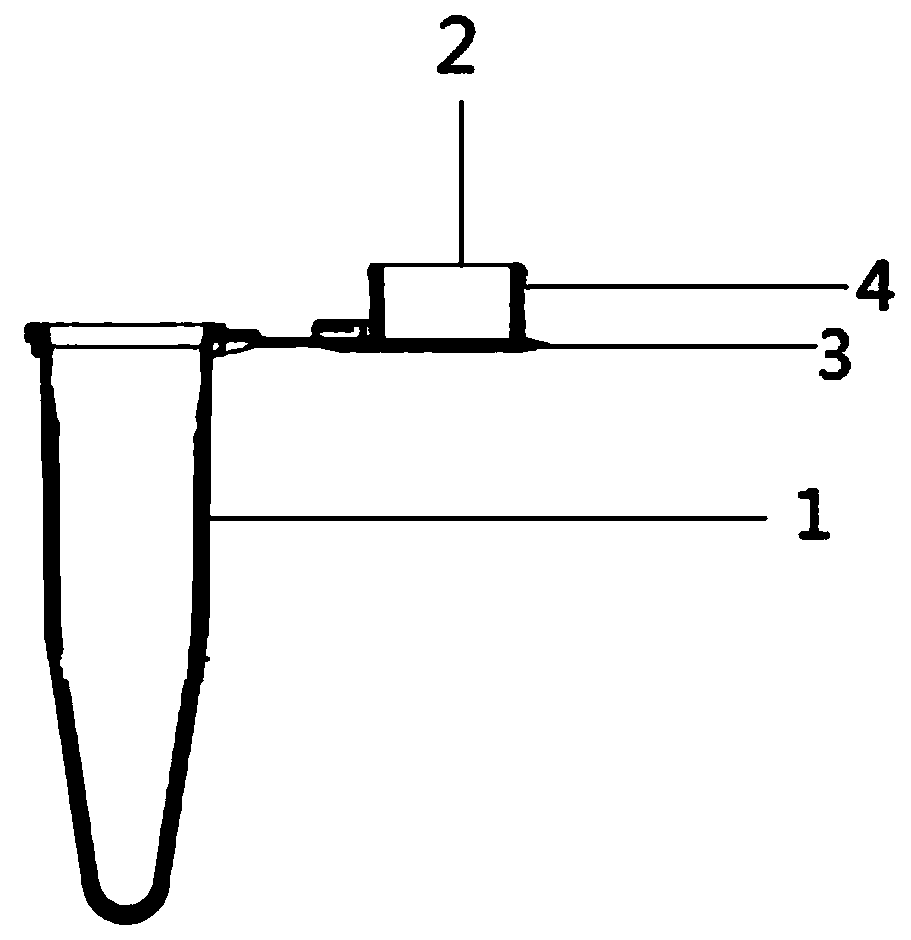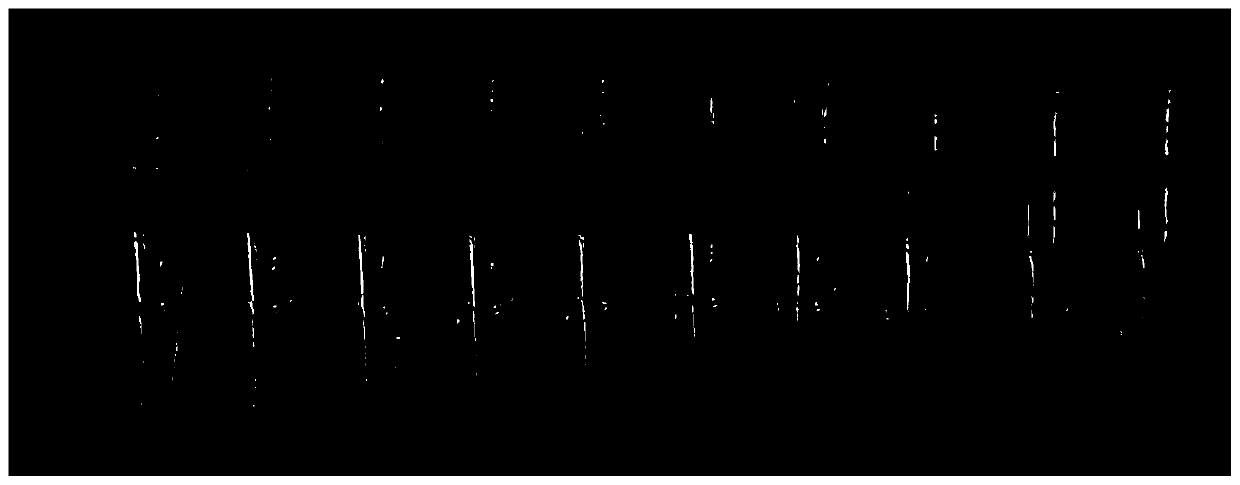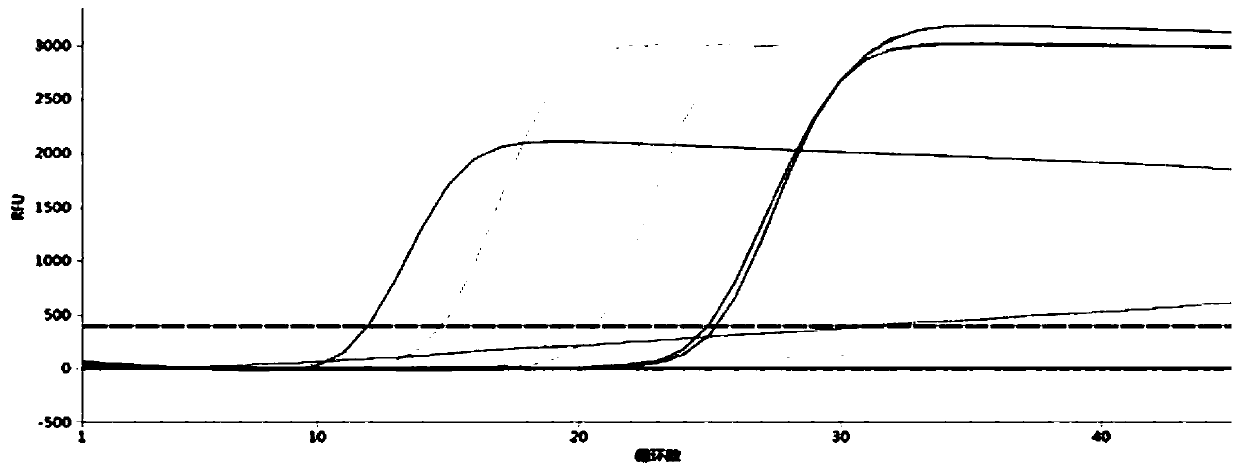Kit for rapidly detecting francisella tularensis
A technology of tularemia and kits, applied in the field of molecular biology, can solve the problems of long detection period and difficulty in popularization and application, and achieve the effects of low cost, reducing the difficulty of experimental operation, and eliminating pollution
- Summary
- Abstract
- Description
- Claims
- Application Information
AI Technical Summary
Problems solved by technology
Method used
Image
Examples
Embodiment 1
[0059] Kit preparation
[0060] In this embodiment, Chelex-100, betaine, Sigma company; Manganese chloride, magnesium sulfate, potassium chloride, sodium hydroxide, EDTA, ammonium sulfate, Sinopharm Chemical Reagent Co., Ltd.; Tris-HCl, Shanghai Shengke Biotechnology Co., Ltd.; TritonX-100, Beijing Milebo Medical Technology Co., Ltd.; dNTP, Pharmacia Corporation.
[0061] According to GeneBank No.: KF607098.1 disclosed tularensis outer membrane protein gene fopA, a specific primer pair for rapid detection of tularensis is designed, and the nucleotide sequence of the primer pair is as follows:
[0062] FP: 5'-CCTTTTGCAAATACTTATAGCGCTTGCCAGTTTCTATCTTGA GGA-3'; SEQ ID NO.1;
[0063] BP: 5'-CCTTTTGCAAATACTTATAGCTTATCGATACGTCAGCAA ACAC-3'; SEQ ID NO.2;
[0064] The kit in this example includes a reaction solution with a pH of 8.8, dNTPs, BstDNA polymerase, FP and BP primers, and an indicator or fluorescent dye.
[0065] In the final reaction system: dNTPs 1.4mM, BstDNA polymeras...
Embodiment 2
[0073] In this example, the kit in Example 1 is used to detect environmental samples. Among them, soak the sterile sampling cotton swab with sterile physiological saline or Chelex lysate, wipe the surface of the contaminated object, and put it into the processing tube containing 2mL Chelex lysate, break the cotton swab rod, cover the processing tube tightly and mix well, Place in an intelligent constant temperature detector at 95°C and heat for 10 minutes to obtain a sample lysate, then take it out and wait for inspection.
[0074] Open the test tube of the experimental group, tear off the covering film, take 14 μL of the sample lysate as the DNA template, divide it into 2 drops, add it dropwise to the test tube cap of the test tube of the experimental group, fasten the cap of the test tube, and invert for about 10 seconds. Set up positive and negative controls at the same time. Pick up the test tubes, positive control tubes, and negative control tubes of the experimental gro...
Embodiment 3
[0077] Take the plasmid clone containing the T. tularensis gene as the detection object, calculate the copy number and perform 10-fold dilution, so that the final nucleic acid concentration is 10 9 copies / μl, 10 8 copies / μl, 10 7 copies / μl, 10 6 copies / μl, 10 5 copies / μl, 10 4 copies / μl, 10 3 copies / μl, 10 2 copies / μl, 10 1 copies / μl, 10 0 copies / μl, and double distilled water was used as a negative control. Utilize the kit in embodiment 1 to detect then; Adopt chromogenic method (adding pH indicator) and fluorescence method respectively (setting absorption wavelength is about 497nm, emission wavelength is about 520nm maximum, is green fluorescence; Reactor is placed In the fluorescence quantitative instrument) to detect, the results are as follows figure 2 , 3 shown.
[0078] Such as figure 2 , the concentration of nucleic acid from left to right is 10 9 copies / μl, 10 8 copies / μl, 10 7 copies / μl, 10 6 copies / μl, 10 5 copies / μl, 10 4 copies / μl, 10 3 copies...
PUM
 Login to View More
Login to View More Abstract
Description
Claims
Application Information
 Login to View More
Login to View More - R&D
- Intellectual Property
- Life Sciences
- Materials
- Tech Scout
- Unparalleled Data Quality
- Higher Quality Content
- 60% Fewer Hallucinations
Browse by: Latest US Patents, China's latest patents, Technical Efficacy Thesaurus, Application Domain, Technology Topic, Popular Technical Reports.
© 2025 PatSnap. All rights reserved.Legal|Privacy policy|Modern Slavery Act Transparency Statement|Sitemap|About US| Contact US: help@patsnap.com



